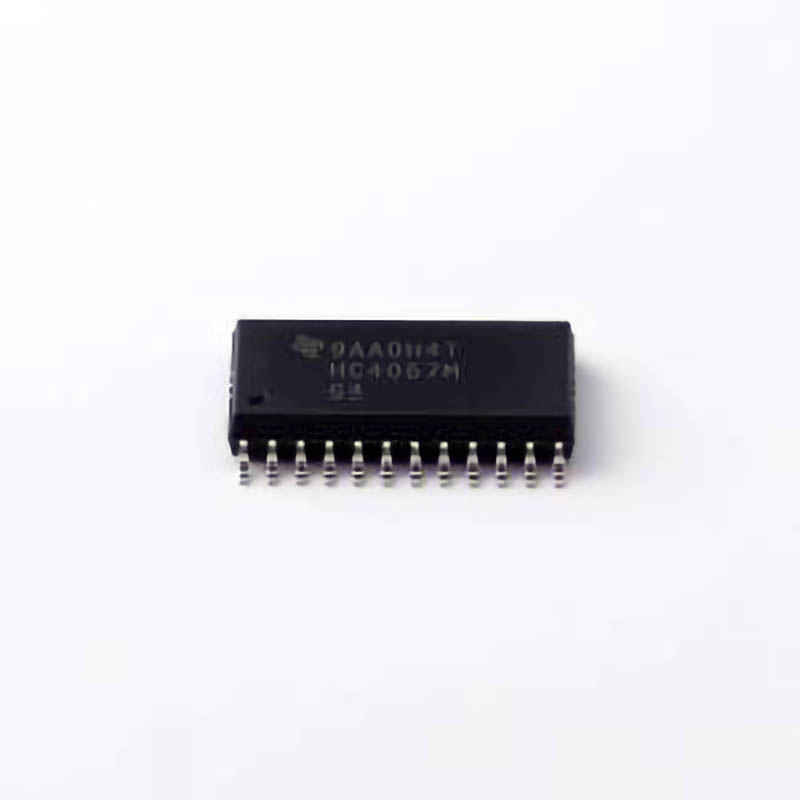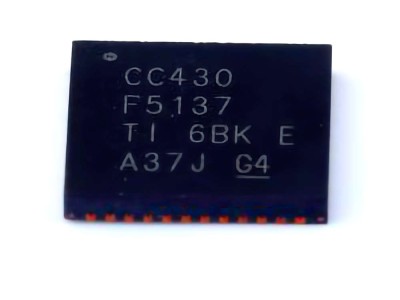
Understanding the CD74HC 4067M96 and Common Issues
The TI CD74HC4067M96 is a 16-channel analog multiplexer designed to route multiple signals to a single output. It is often used in electronics to manage signal flow in complex circuits, making it an essential component in sensor networks, signal processing, and control systems. This chip allows engineers to switch between various signals efficiently, making it a crucial part of many designs. However, like any electronic component, the CD74HC4067M96 is not immune to problems. Whether you’re a beginner or an experienced engineer, understanding potential issues and troubleshooting them is key to maintaining the performance and reliability of your circuit.
1. Power Supply Issues
The first issue that often arises when working with the CD74HC4067M96 is related to its power supply. This multiplexer is designed to operate within a voltage range of 2V to 6V, with the most common value being 5V. A fluctuation in the supply voltage can cause improper switching or even failure of the device.
Solution:
Ensure that the supply voltage remains stable within the specified range.
Use a voltage regulator or a dedicated power supply to maintain consistency.
Check for issues like power surges or drops that could affect performance.
Use a multimeter to measure the voltage and verify that it meets the required specifications for the device.
2. Improper Control Pin Setup
The CD74HC4067M96 operates through its control pins (S1, S2, S3, S4) that select which of the 16 channels will be connected to the output. If these control pins are not set correctly, the multiplexer might route signals to the wrong channel, causing confusion in the system.
Solution:
Double-check the wiring of the control pins.
Ensure that the pins are properly connected to the logic source, such as a microcontroller or a control circuit.
Make sure the logic levels are within the expected HIGH or LOW range to select the appropriate channel.
Use pull-down or pull-up resistors if needed to stabilize the logic signals.
3. Signal Integrity and Noise
One of the challenges of using the CD74HC4067M96 is maintaining the integrity of the analog signals being routed. If the input signals have too much noise or improper grounding, the multiplexer may not function as expected. This is especially common in environments with high electromagnetic interference ( EMI ) or when working with sensitive analog signals.
Solution:
Use proper grounding techniques to minimize noise.
Implement shielding around sensitive parts of the circuit.
Use decoupling capacitor s near the power pins of the multiplexer to reduce power supply noise.
Consider adding low-pass filters to the input or output signal paths to reduce high-frequency noise.
4. Incorrect or Insufficient Switching Speed
Another issue that may arise is that the multiplexer switches too slowly for the application, especially in systems that require high-speed signal routing. If the switching speed of the CD74HC4067M96 is not suitable for the design requirements, the multiplexer may cause delays, jitter, or signal distortion.
Solution:
Ensure that the control signals are fast enough to trigger the multiplexer’s switching action.
If you require faster switching, consider using an alternative multiplexer or a faster control circuit.
Check that the Timing of the clock signal is appropriate for the desired switching speed.
Use an oscilloscope to check the switching characteristics of the multiplexer in the circuit.
5. Overloading the Channels
The CD74HC4067M96 is designed to handle a limited amount of current through its channels. Overloading any channel can damage the multiplexer or affect its functionality. If too much current is passed through a channel, it can lead to heating, signal degradation, or complete failure of the device.
Solution:
Ensure that the current through each channel is within the specified limits, typically 25mA per channel.
Use resistors or current-limiting devices to prevent overloading.
If using the multiplexer in high-current applications, consider using a transistor or buffer stage between the multiplexer and the load.
Advanced Troubleshooting and Best Practices for the CD74HC4067M96
While basic issues like power supply fluctuations and improper control pin setup are relatively easy to resolve, more complex problems can arise when integrating the CD74HC4067M96 into sophisticated systems. This part of the article will focus on advanced troubleshooting and best practices to ensure that you get the most out of your multiplexer.
1. Channel Crosstalk and Signal Isolation
Crosstalk occurs when signals from one channel interfere with those of another channel. This can lead to signal distortion, especially when working with high-frequency or sensitive analog signals. Crosstalk is particularly noticeable when the signals are not properly isolated from one another.
Solution:
Use appropriate channel isolation techniques to reduce the likelihood of crosstalk.
Keep the signal paths as short as possible and avoid running analog lines near high-speed digital lines.
If crosstalk persists, consider adding small capacitors between adjacent channels to provide additional isolation.
Use differential signaling if possible to reduce interference.
2. Improper Timing or Synchronization
In complex circuits that involve multiple CD74HC4067M96 multiplexers or other timed components, improper timing or synchronization can cause the multiplexers to select the wrong channel or introduce timing errors.
Solution:
Ensure that all control signals are synchronized to a common clock or timing source.
If using multiple multiplexers, make sure their timing signals do not overlap, causing unintended channel selection.
Use edge-triggered flip-flops or registers to store control signals and synchronize them to the clock.
Double-check the timing diagrams in the datasheet to ensure the control signals are within the recommended setup and hold times.
3. Thermal Management
In some designs, the CD74HC4067M96 may generate heat, especially when operating near the upper end of its voltage and current limits. Excessive heat can lead to thermal stress, resulting in reduced performance or failure.
Solution:
Add heat sinks or use thermal pads to help dissipate heat effectively.
Ensure that the multiplexer is not installed in a confined space that could trap heat.
Consider using a lower-voltage supply or reducing the load to decrease power dissipation.
Check the thermal specifications in the datasheet to ensure that the multiplexer operates within the recommended temperature range.
4. Addressing High-Voltage or Over-Voltage Conditions
While the CD74HC4067M96 can handle a wide voltage range, applying a voltage that exceeds the specified limits can damage the chip or cause erratic behavior. This is particularly true for the signal inputs, where high-voltage spikes can cause permanent damage.
Solution:
Use protection diodes or Zener diodes to clamp voltage spikes and prevent over-voltage conditions.
If operating in an environment with transient voltage spikes, consider using additional circuit protection components like transient voltage suppressors ( TVS ).
Always verify the input voltage levels before applying them to the multiplexer.
5. Designing for Reliability and Long-Term Stability
To maximize the longevity and stability of the CD74HC4067M96, it is important to follow best design practices from the beginning of your project. This includes ensuring that the multiplexer is used within its specified limits, selecting the correct components for the application, and designing the PCB with care.
Solution:
Use high-quality components that meet the voltage, current, and temperature specifications outlined in the datasheet.
Avoid over-driving the inputs or outputs of the multiplexer.
Implement robust grounding and power management techniques to ensure long-term stability.
Follow the manufacturer’s recommendations for PCB layout, especially regarding signal routing and power distribution.
By following these troubleshooting steps and best practices, you can overcome the common and advanced issues that may arise when using the CD74HC4067M96 multiplexer. Proper design, careful attention to signal integrity, and maintaining optimal operating conditions will ensure that your system functions reliably and efficiently, meeting the demands of your project.
If you’re looking for models of commonly used electronic components or more information about CD74HC4067M96 datasheets, compile all your procurement and CAD information in one place.
(Partnering with an electronic component supplier) sets your team up for success, ensuring that the design, production and procurement processes are streamlined and error-free. (Contact us) for free today


